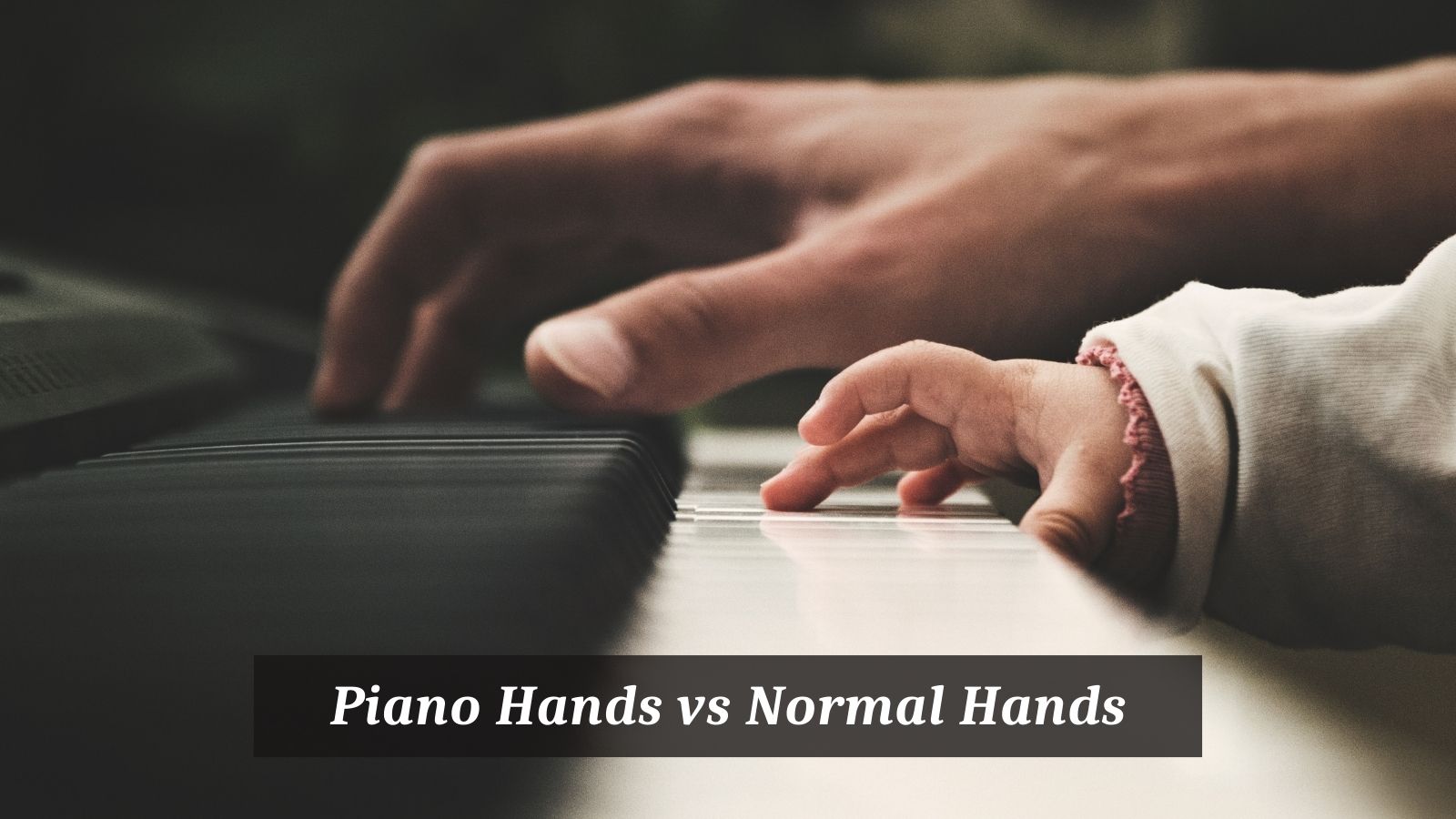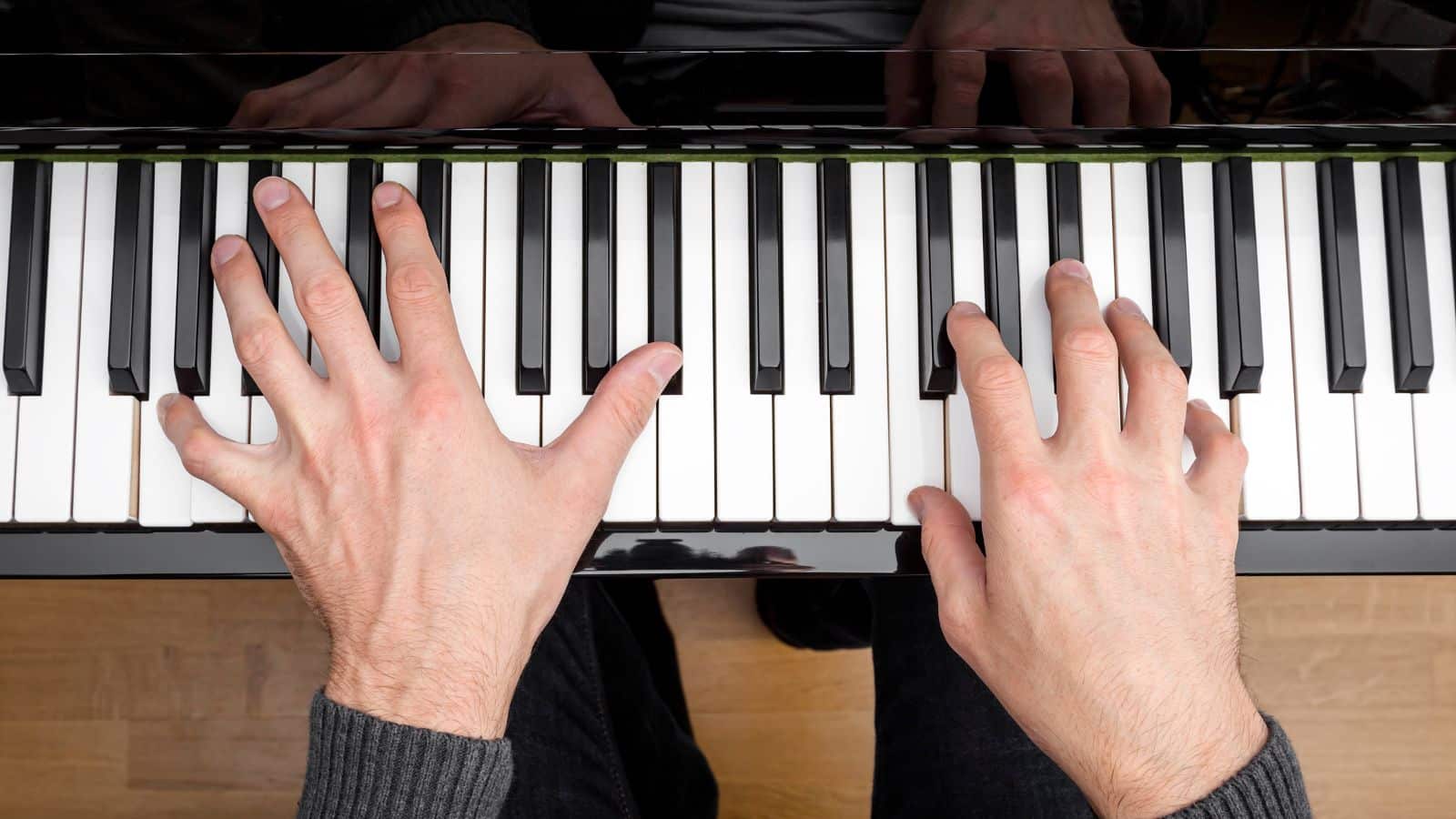
The title above implies that, in some way, the hands of pianists are radically different from the hands of non-pianists. Whilst there is a marginal truth here, the fact is that everybody’s hands are different.
Children’s hands change dramatically as they grow, with some brave little souls tackling the piano as young as three or four years old. The hands of men and women are frequently different too, but there are plenty of both sex playing at the highest levels on the instrument.
Equally, the hands of Caucasian males tend to be slightly larger than those of the average Asian male hands.
All of this boils down to that there aren’t specifically piano-type hands and non-piano-type hands but a variety of different-shaped hands, each of which can access the piano.
Piano Hands vs Normal Hands
For some, it may be more of a challenge than others, but this is the nature of learning an instrument. It could be argued that some hands favor a particular instrument, but I have found that a little determination and some thoughtful professional tutoring can take you where you wish to be.
Where I think some of the distinctions come from the unique characteristics of the hands of well-known pianists. On countless occasions, I’ve heard mention of the long fingers of Chopin or the astonishing hand span of Rachmaninov.
This is true, but when used as a deterrent to learning the piano, the comment is best left out of the conversation. Certainly, if you have smaller hands and want to play works by Rachmaninov, they will present a greater challenge, but very few pianists have hands as large as his. They still learn and perform his music.
It is perhaps worth mentioning that Elton John has hands that do not quite reach an octave, yet he’s had a pretty successful career playing the piano.
One survey conducted in 2015 by Rhona Boyle1 gives a clear indication of the enormous differences between the hands of pianists. Whilst the survey only included 473 pianists, it succinctly highlights the anticipated diversity of the hands.
What needs to be remembered and reflected on is that each of these 473 people plays the piano regardless of the differences. It is a myth that pianists always have gigantic hand spans, long fingers, and incredible agility. The first two attributes are genetic, while the third depends on practice.
So, are there normal hands? The simple response is that all hands are normal, but some are trained, others not. At one time, every pianist was not a pianist. Only at this point did they decide to take on the challenge of learning the piano that they became a pianist.
Then, if you like, their hands will begin to change with dedicated practice. This doesn’t mean their hands will suddenly or slowly evolve into shapes, lengths, or spans that they weren’t before, just that their dexterity and strength will alter their hands.
In this way, maybe, there is a transition from normal to piano hands.
If we accept for now that the distinction between piano hands and normal hands is not one truly of shape and size but of application, then there is the opportunity to look at how hands become more pianistic.
No matter how hard or how long you practice the piano, the hands you were born with will not change finger length or fundamental shape. Whether you are close to Elton John or Rachmaninov, your hands will remain the same.
Where the change can come is in the strength, flexibility, and agility of each hand. Do not do as Robert Schumann did and invent a hand-strengthening device.
Actually, the evidence for the existence of this machine is scant. Still, the story told of Schumann creating or using such a device to stretch and strengthen his fingers, permanently disabling his right hand’s fourth finger.
Don’t try to find alternative methods for acquiring the essential aspects of piano playing. Only by dedicated practice and the right kind of practice will you gain strength, flexibility, and agility.
Guidance on the right kind of practice is probably best acquired from a seasoned and empathic piano teacher. You may prefer to use the colossal selection of video tutorials available on YouTube, but again, choose carefully there are a lot of videos that are not helpful.
From a traditional standpoint, working on scales and arpeggios in all keys with various rhythms and articulations is a good place to begin. It is also a fine place to continue too.
There has been a vast quantity of études or studies composed for piano over centuries, each designed to advance the technique of the performer. Chopin composed two phenomenal sets of studies, Op.10 and Op.25, giving any pianist pause for thought.
Equally, the studies by Czerny are to be recommended, some of which he specifically states are for daily practice. Given the tempo markings for some of them, they are enough to keep pianists working hard for years.
Alongside the devoted study collection, there are many piano methods. These often include practice routines carefully curated to allow the natural stretching of the hands and gradual improvement in agility, strength and touch.
Some methods, like the John Thompson books, take you from the very early stages to reasonably advanced ones but are a little dated now. You might consider Joanna McGregor’s Piano World as a starting point. This series of books is appealing and cleverly designed by one of the world’s leading pianists.
Whichever pathway you choose, remember that with patience and persistence, your normal hands can become those of a piano player. You may not be a Barenboim or a Liszt, but you will have fun on the journey.
Your hands might turn out to have some unusual qualities, like Chopin’s, that develop a new approach to piano technique and raise the bar just one step higher.

